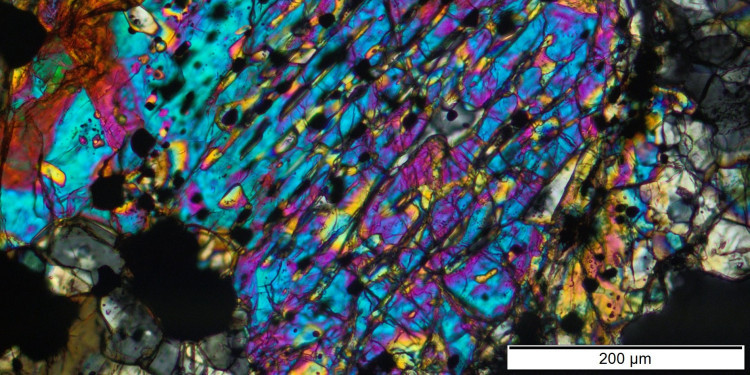
Experts discover rare high-pressure minerals in meteorite
Five years ago, on 19 November 2020, a meteoroid brightened the sky over parts of Germany, Austria and Italy. The European Fireball Network was quickly able to located the impact site. However, it was not until the summer of 2021 that a 233-gram fragment was found near Kindberg in Styria, Austria. This is considered only the fifth observed meteorite fall in Austria. An initial classification showed that the 'Kindberg' meteorite is a weakly shocked L6 chondrite. This classification means that the meteorite has only been exposed to a relatively low impact load during its existence. Nevertheless, this has significantly affected some of its components. An international team led by the Institute of Planetology at the University of Münster, German, has now examined the stone meteorite in more detail. "With its characteristic black shock veins, 'Kindberg' is an ideal specimen for infrared analysis. We are therefore looking for effects related to the shock veins, such as the melting of individual minerals, which are also visible in the infrared range,' explains Prof. Dr Addi Bischoff. The team has now succeeded in doing this in a surprising way, as evidenced by the discovery of various high-pressure minerals. The results have now been published in the journal Meteoritics & Planetary Science.

Such high-pressure phases normally only occur deep within the Earth's crust or artificially in a laboratory setting. In the case of the Kindberg meteorite, they were formed by at least one intense collision between its parent body and another asteroid in the asteroid belt, which is located around 250 million kilometres from Earth. The research team proved that high-pressure phases can form and remain intact in weakly shocked meteorites.
These findings are relevant not only for meteorite research. "This new knowledge provides important insights for the remote sensing of asteroids and terrestrial planets such as Mercury," explains Iris Weber. "If high-pressure phases can form with low shock loads, they could be more common in heavily shocked rocks." This must be taken into account by experts when interpreting spectral data from such bodies. The results are the starting point for further investigations, such as the upcoming investigation of Mercury's mineralogical composition using the MERTIS instrument on board the ESA's BepiColombo mission, in which the Institute of Planetary Science is participating.
Original publication
Addi Bischoff, Maximilian P. Reitze,,Julia Roszjar, Markus Patzek, Jean-Alix Barrat, Jasper Berndt, Tommaso Di Rocco, Andreas Pack, and Iris Weber: Kindberg, the 5th meteorite fall in Austria: A weakly shocked L6 chondrite breccia with high-pressure phases. Meteorit Planet Sci. DOI: 10.1111/MAPS.70072
